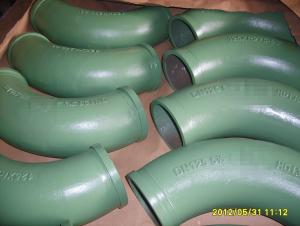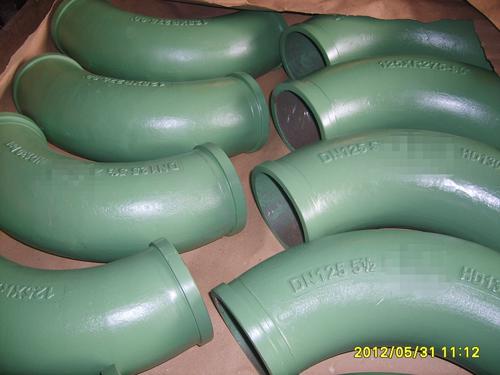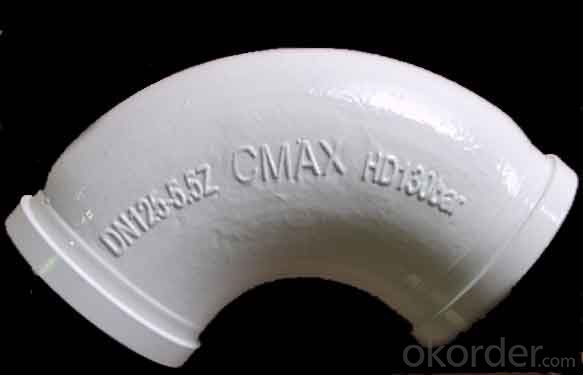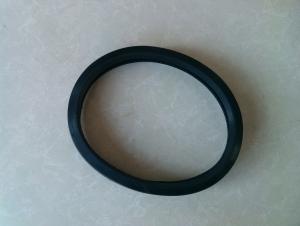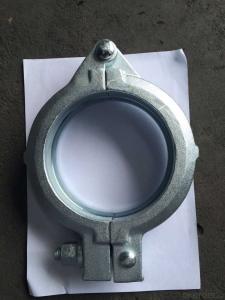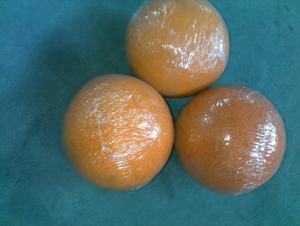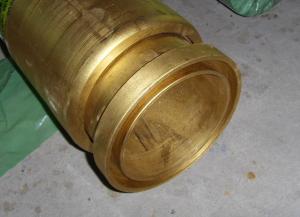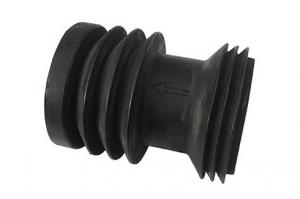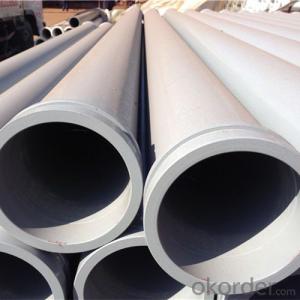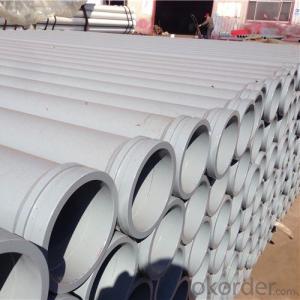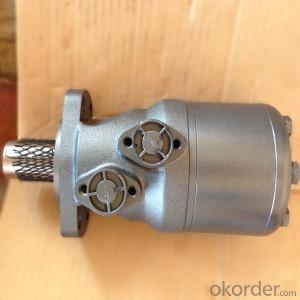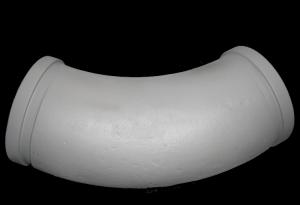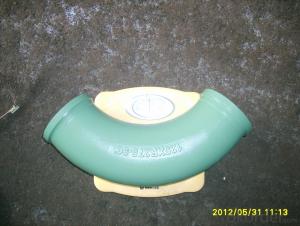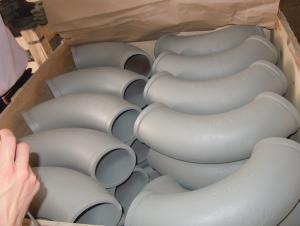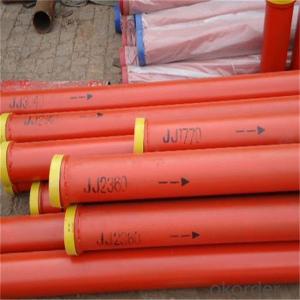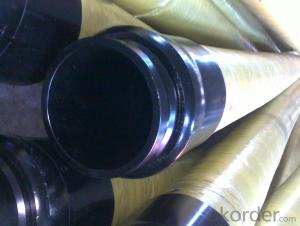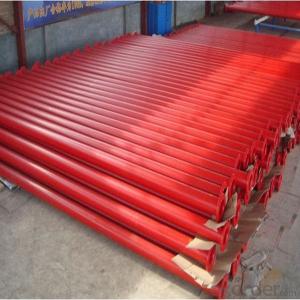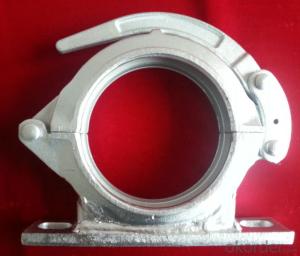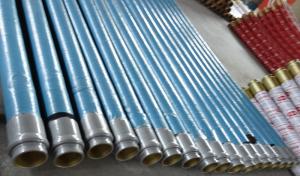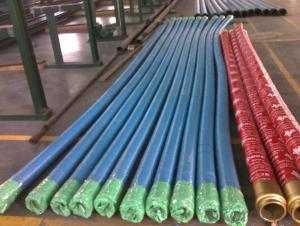Concrete Pump Truck Parts Elbow Bend R275 DN125 148Flange 20DGR Casting
- Loading Port:
- China main port
- Payment Terms:
- TT OR LC
- Min Order Qty:
- 180 pc
- Supply Capability:
- 10000 pc/month
OKorder Service Pledge
OKorder Financial Service
You Might Also Like
Product Description:
Widely used on concrete pump truck, concrete placing boom, trailer concrete pump etc, for concrete delivery pipe connection.
Our concrete pump bends have been successfully exported to many countries from 1998, Our main markets as below: Middle East, Southeast Asia, America, Brazil, Italy, Russia, South Africa etc
Main Product Features:
1. Mainly adopt carbon steel high wear resistant steel, and other material upon your request.
2. The inner side of this concrete pump elbow undergoes heat treatment, and then the hardness can reach 68HRC.
3. Possess quality certification of ISO 9001:2000.
4. A wide range of specifications for you./ We have been providing parts for nearly ten years, and cooperting with the agent of the world famous brand, possess near every kind of elbow in the market.
5. We can supply OEM service and can also produce according to your requirements.
6. Total series of concrete pump ELBOW for different brand concrete pump(PUTZMEISTER, SCHWING, CIFA, SANY, ZOOMLION, IHI, KYOKUTO Etc) available from us.
Product Specifications:
Technology: Cast
Dimension: DN125
Radius: 275mm
Degree: 20D
Material: Mn13-4
Weight: 5.2kg
Characteristics: According to our technology, the cast elbow also has high working pressure and burst pressure.
Package: Every 180pcs put in one seaworthy wooden box, and 20 boxes in one 20feet container.
FAQ:
Q1: How to confirm that your elbows could be used in our pump?
A1: We have been providing parts for nearly ten years, and cooperting with the agent of the world famous brand, possess near every kind of elbow in the market. What is more, we can produce as the customers request with drawing provided.
Q2: How do we guarantee the quality of our products?
A2: We have established an advanced quality management system which conducts strict quality tests at every step, from raw materials to the final product.
Q3: How soon can we receive the product after purchase?
A3: Within three days of placing an order, we will begin production. The specific shipping date is dependent upon international and government factors, but is typically 10 to 20 workdays.
Q4: If we can produce some Concrete Pump Truck Parts according to customers request?
A4: Yes, we can produce Concrete Pump Truck Parts according to the difference country situations to make it suitable to the market and customers. We have very professional technical team to make the design.
Q5: How to make a quick resolution for after service?
A5: OKorder and our manufacture both have overseas branches all-around of world, IF needed, the seller shall dispatch 2 engineers to the buyer's site for supervision of training. The buyer shall make available of necessary facilities & skilled personnel at site for training.
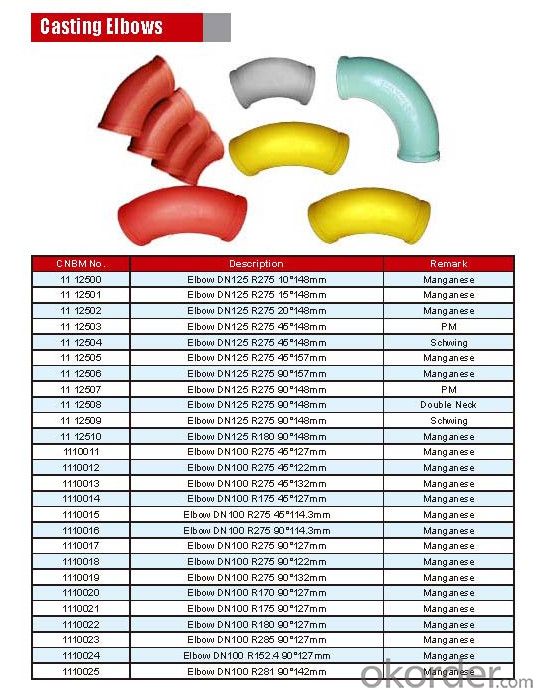
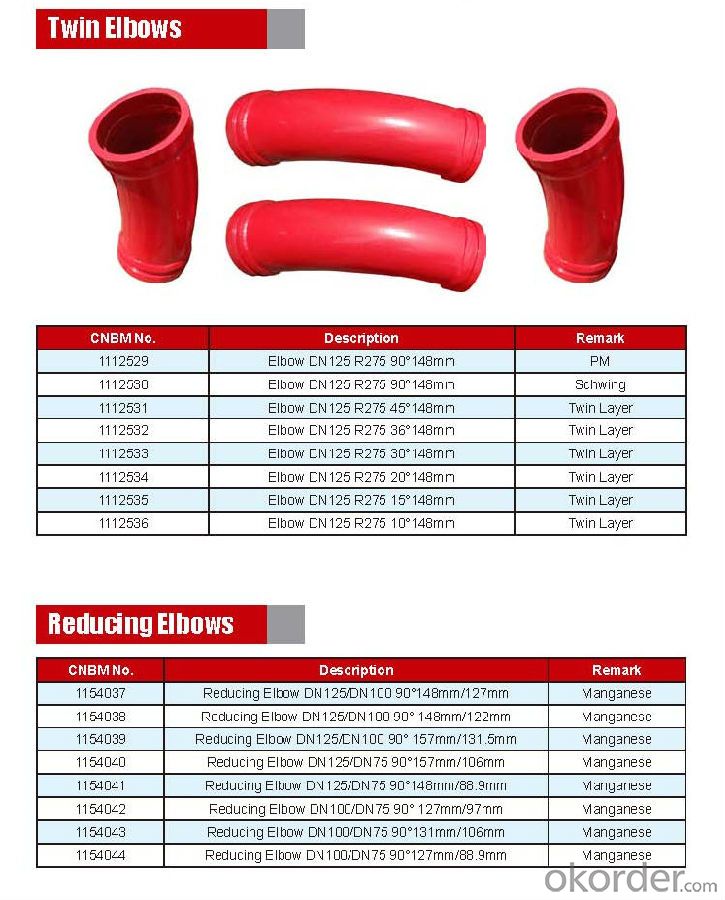
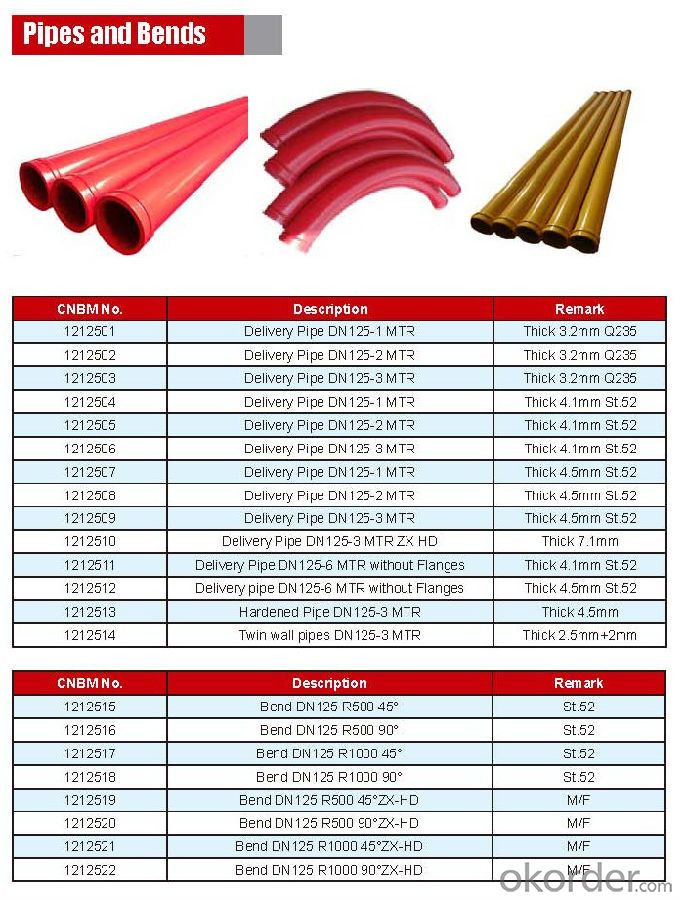
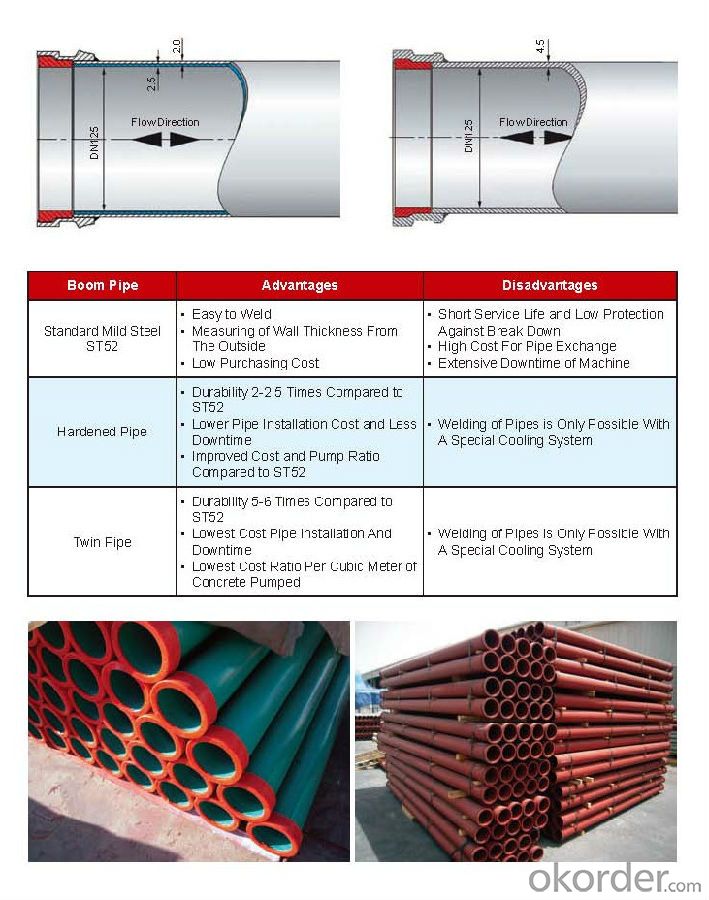
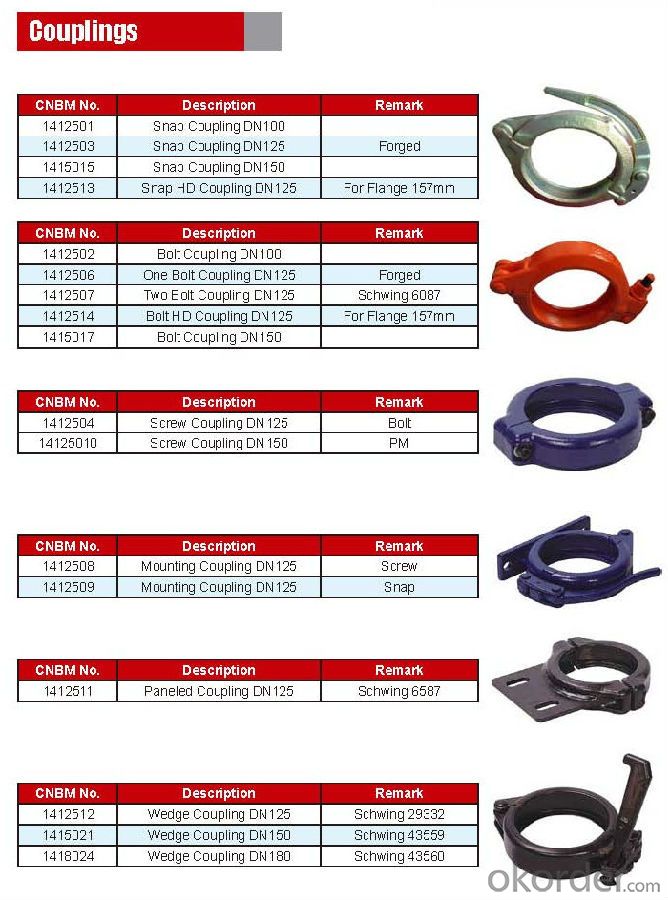
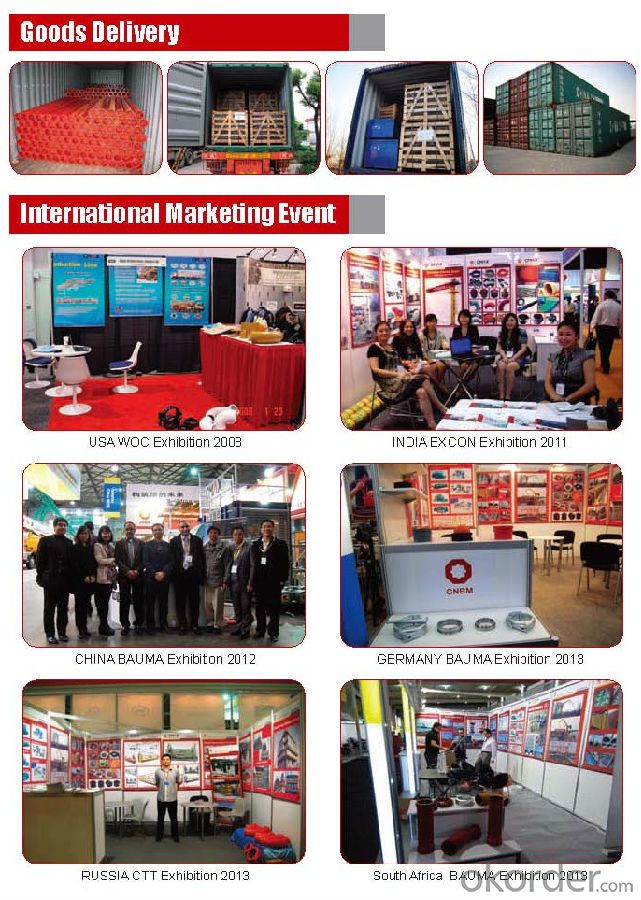
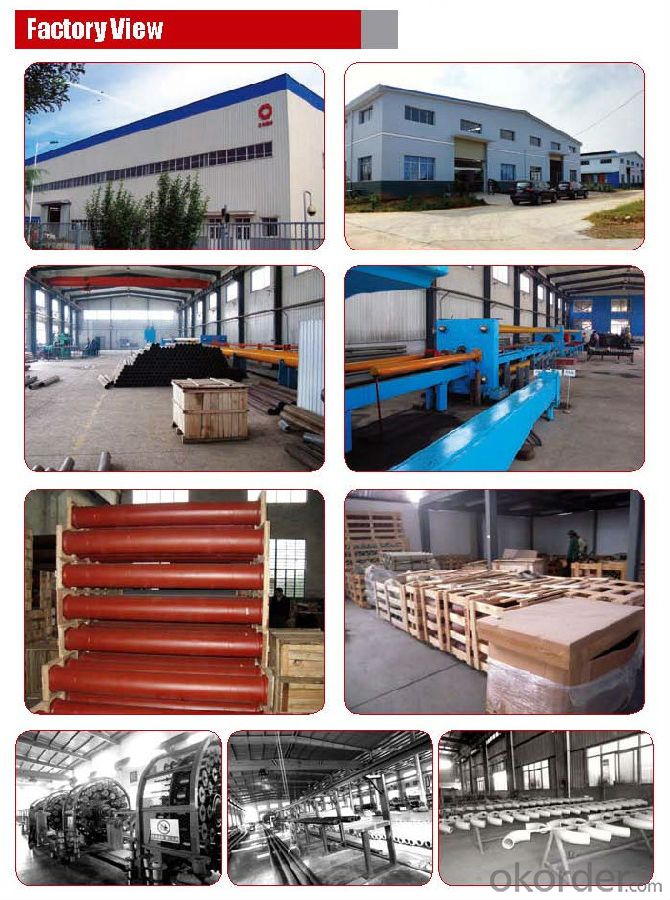
- Q: What is the function of a concrete pump hopper grate lever?
- The concrete pump hopper grate lever serves the purpose of regulating the opening and closing of the hopper grate on a concrete pump. The hopper grate, which is a metal grid covering the chamber where the concrete is loaded before being pumped, is controlled by this lever. This lever grants the operator the ability to effortlessly adjust the position of the grate. It can be opened to allow the concrete to flow into the hopper or closed to prevent any debris or foreign objects from entering the pump system. The control provided by the lever is essential for ensuring the smooth and efficient operation of the concrete pump. Any obstructions or contaminants in the hopper have the potential to cause damage to the pump or compromise the quality of the concrete being pumped. By utilizing the hopper grate lever, the operator can maintain a constant flow of concrete into the pump and ensure that only clean and properly mixed concrete is used. Moreover, the lever serves as a safety precaution, allowing the operator to swiftly close the grate in the event of an emergency or malfunction. In conclusion, the concrete pump hopper grate lever plays a critical role in the effective functioning and upkeep of a concrete pump system.
- Q: How often should concrete pump hydraulic oil coolers be inspected and maintained?
- To guarantee optimal performance and avoid possible problems, it is necessary to carry out regular inspections and maintenance on the hydraulic oil coolers of concrete pumps. The frequency of these procedures will vary depending on factors such as the pump's operating conditions, workload, and the recommendations provided by the manufacturer. As a general rule, it is advisable to inspect and maintain the concrete pump hydraulic oil coolers at least once every six months or every 500-700 operating hours, whichever comes first. However, in more demanding or extreme operating conditions, it may be necessary to perform these tasks more frequently. During these inspections, it is of utmost importance to thoroughly clean the cooler and examine it for any signs of damage, corrosion, or leaks. It is also crucial to inspect the cooler's fins for any blockages, as the presence of debris or dirt can decrease its efficiency. Regularly checking and replacing the air filters of the cooler is equally important to ensure proper airflow and prevent overheating. In terms of regular maintenance, it is vital to replace the hydraulic oil and filters according to the manufacturer's recommendations. This action helps maintain the oil's viscosity and prevents any contaminants from causing damage to the cooler or other hydraulic components. To summarize, conducting regular inspections and maintenance on concrete pump hydraulic oil coolers is crucial to ensure efficient operation and prolong their lifespan. By adhering to the manufacturer's guidelines and taking into account specific operating conditions, it is possible to determine the appropriate frequency for these inspections and maintenance tasks.
- Q: What is the purpose of a concrete pump carbide wear plate?
- A concrete pump carbide wear plate serves the purpose of facilitating the transfer of concrete from the hopper to the desired location by providing a resilient and long-lasting surface. Concrete pumps utilize a piston system to propel the concrete through the pump and into the delivery line. Throughout this process, the wear plate acts as a safeguard against the abrasive nature of the concrete. Concrete comprises various components such as sand, gravel, cement, and water. When forced through the pump, the concrete's abrasive particles can inflict substantial damage on the pump's internal elements, leading to reduced efficiency and increased maintenance expenses. The carbide wear plate is specifically engineered to endure the elevated pressures and abrasive forces encountered during the concrete pumping procedure. Constructed from a robust and durable material known as carbide, this wear plate supplies a resilient surface that minimizes wear and tear on the pump's internal parts. By incorporating a concrete pump carbide wear plate, contractors and construction experts can ensure the efficient and effective operation of their concrete pumps, with minimal interruptions for repairs. This not only saves time and money but also guarantees that the concrete is transported smoothly and consistently to the desired location, resulting in high-quality construction projects.
- Q: What are the fittings of concrete pump?
- The commonly used electrical accessories (button switch, switch, trip circuit breaker, transformer terminals, etc.), hydraulic pipe
- Q: How often should hopper agitator shafts be inspected or replaced in a concrete pump?
- Hopper agitator shafts in a concrete pump should be inspected regularly, ideally during routine maintenance checks, to ensure they are in proper working condition. The frequency of inspections may vary depending on the usage and operating conditions of the concrete pump. However, a general recommendation would be to inspect or replace hopper agitator shafts at least once every 6 to 12 months to prevent any potential issues or malfunctions.
- Q: How often should hydraulic filters be replaced in a concrete pump?
- Hydraulic filters in a concrete pump should be replaced regularly, typically every 500 to 1,000 operating hours or as recommended by the manufacturer. Regular replacement ensures optimal performance and helps prevent contamination and damage to the hydraulic system.
- Q: How can a malfunctioning control box affect the pump's operation?
- A malfunctioning control box can disrupt the pump's operation in several ways. It may fail to send accurate signals to the pump, leading to incorrect speed or pressure settings. This can result in inadequate water flow or excessive pressure, affecting the pump's efficiency and potentially causing damage. Moreover, a malfunctioning control box might also cause the pump to start or stop unexpectedly, leading to inconsistent operation and potential system failures.
- Q: How often should concrete pump lubrication systems be inspected and maintained?
- Concrete pump lubrication systems should be inspected and maintained regularly to ensure their proper functioning and longevity. The frequency of inspections and maintenance will depend on various factors such as the type of pump, its usage, and the manufacturer's recommendations. Generally, it is recommended to inspect and maintain concrete pump lubrication systems on a monthly basis. This allows for early detection of any potential issues or wear and tear that may require attention. Additionally, regular inspections can help identify any signs of lubricant degradation or contamination, which can impact the efficiency and performance of the system. During the inspection, it is important to check for any leaks, damaged or worn-out components, and ensure that all lubrication points are properly greased. The lubrication system should also be cleaned to remove any debris or contaminants that may have accumulated over time. In addition to monthly inspections, certain maintenance tasks should be performed at regular intervals. This may include changing the lubricant and filters, adjusting or replacing belts and hoses, and checking the system for proper pressure and flow. It is important to note that the manufacturer's guidelines and recommendations should always be followed when it comes to inspecting and maintaining concrete pump lubrication systems. They may provide specific instructions based on the type and model of the pump, as well as any unique requirements. By regularly inspecting and maintaining concrete pump lubrication systems, you can ensure their optimal performance, minimize downtime, and extend their lifespan.
- Q: How do I troubleshoot issues related to concrete pump spare parts control systems?
- To troubleshoot issues related to concrete pump spare parts control systems, you can follow these steps: 1. Start by checking the power supply and connections to ensure there are no loose or damaged wires. 2. Verify that the control system is properly calibrated and programmed according to the manufacturer's instructions. 3. Inspect the control panel for any visible signs of damage, such as burnt components or water ingress. 4. Use a multimeter to test the voltage and continuity of different control system components, such as sensors, switches, and relays. 5. Consult the system's user manual or contact the manufacturer for any specific troubleshooting steps or error code interpretations. 6. If the issue persists, consider contacting a professional technician or the manufacturer's customer support for further assistance.
- Q: If the concrete pump valve jam how to judge and deal with?
- After pumping concrete, be sure to use high-pressure water to pump the body and S pipe clean. When the rinse is not available, tap the tap to remove the residue until it is thoroughly clean.
Send your message to us
Concrete Pump Truck Parts Elbow Bend R275 DN125 148Flange 20DGR Casting
- Loading Port:
- China main port
- Payment Terms:
- TT OR LC
- Min Order Qty:
- 180 pc
- Supply Capability:
- 10000 pc/month
OKorder Service Pledge
OKorder Financial Service
Similar products
Hot products
Hot Searches
Related keywords
